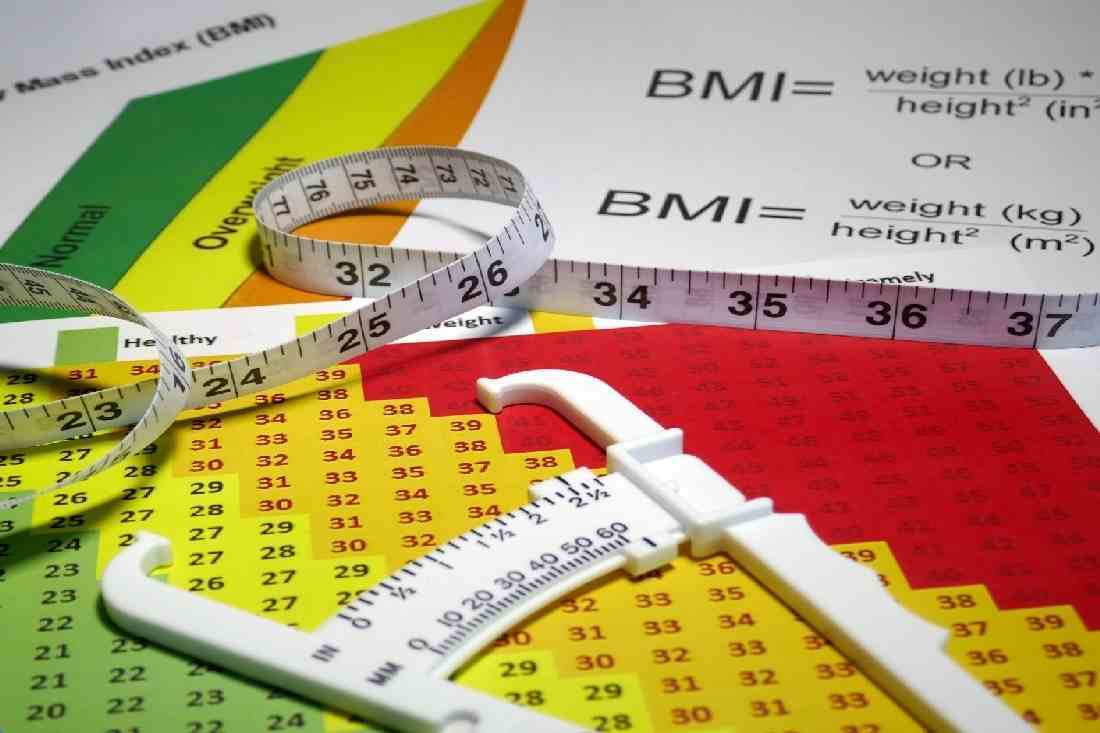As a parent, you’re probably frequently reminded not to compare your child to other children, and that there really are no “normal” sentences when it comes to growth and development. The same applies to your child’s body mass index (BMI).
BMI considers weight, height, and age, but many other factors play a role in body mass, including genetics and metabolism. For this reason, paediatricians consider not only your child’s BMI, but also their growth trends, height and type, activity level, diet, and other factors to truly grasp your child’s overall health and well-being.
Regardless of their current age-related BMI category, help your child or teen develop healthy weight habits and talk to your doctor or other healthcare providers as part of ongoing age-related BMI monitoring. If your child is gaining or losing significant weight, they should be referred and guided by a doctor or other healthcare provider.
Tracking growth patterns over time can help you ensure your child achieves or maintains a healthy weight. A single calculation of BMI for age is not enough to assess long-term weight status, as your child’s height and weight will change as they grow. For individuals, healthcare providers must consider BMI along with other factors such as family history, blood pressure, blood glucose levels, eating habits, and physical activity.
What Is BMI for Children?
BMI estimates the amount of body fat you have. It depends on your size and weight. But for children, height and weight alone aren’t as accurate as they are for adults. Your BMIs vary by age and gender.
Therefore, when medical professionals talk about a child’s BMI, what they provide is not a simple number like 25, but a percentile like 75. This shows how a child’s BMI compares to other children of the same age and sex. For example, a 6-year-old with a BMI in the 75th percentile has a higher BMI than 75 out of 100. That’s in a healthy weight range.
Talk to Your Pediatrician About BMI
Many parents assume that if their child had a high BMI, their paediatrician would tell them. That’s not always the case. Your child’s BMI is usually checked at annual check-ups, but sometimes doctors don’t mention weight problems to parents. If you’re interested in your child’s BMI percentile, it’s best to ask directly.
Some school districts have started measuring the BMI of all children in school. The school then sends a report card home to alert parents of any weight issues. Although some parents don’t like the idea of schools sending out their children’s BMI reports, experts say the goal isn’t to embarrass anyone; it is intended to inform parents about a health problem with serious consequences. These include type 2 diabetes, joint problems, breathing problems like asthma, and sleep apnea.
Children with obesity are at increased risk of obesity later in life. Adults with obesity are at increased risk of stroke, many types of cancer, and premature death.
Here’s How to Talk to Your Child’s Pediatrician About BMI
If you are worried about your child’s weight, you can turn to online BMI calculators or health tracker apps to find out where your child is so you can act. Although BMI is the reference tool for health professionals and health applications, it is not the only way to measure health, especially in children and adolescents.
Before you start counting calories, talk to your child’s paediatrician about BMI and what it means for your child. There is no such thing as an “ideal weight” for growing children and young people. Height and weight aren’t the only factors affecting your child’s health.
By the time puberty is reached, you may see significant changes in your child’s weight and height. Proper nutrition is essential during this period of rapid growth. However, if your child’s BMI is below the 5th percentile or above the 85th percentile, it’s time to speak to your paediatrician for advice.
BMIs falling outside the normal weight percentile range are indicative of potential health problems. Children and adolescents with a BMI above the 95th percentile is at risk of developing health problems such as high blood pressure or high cholesterol. Children who are outside of the “ideal weight range” can also experience teasing and bullying, which can affect their self-esteem.
The Centres for Disease Control and Prevention (CDC) says children and adolescents with a BMI outside the normal range need further evaluation and testing. This could include tests that assess body composition and body fat percentage, such as measurements of skinfold thickness.
What Are the Different Causes of Childhood Obesity?
Several factors can contribute to your child’s weight, including family history, mental health issues, socioeconomic status, and lifestyle habits. Some of these are under your control, some are not.
Children with family members who are overweight or obese are also more likely to have weight problems because genetics and metabolism play a role in a child’s weight, previous research shows. Additionally, short sleep duration and community safety can affect a child’s risk. There are two factors that contribute to childhood obesity that you can control: eating habits and lack of exercise.
Talk to your son or daughter’s paediatrician to find out where they might fall on the scale. American children are increasingly tipping the scales as the extra weight puts them at risk for immediate and future health complications such as depression, type 2 diabetes, and heart disease. How do you know if your child is overweight or obese? Doctors say this involves a term you may already be familiar with: BMI, or body mass index.
What Is BMI and Why Is Your Child’s Number Important?
BMI is a scale that defines obesity considering body weight and height. Children whose weight places them in the 95th percentile, or heavier than 95 percent of children their age, are considered obese, according to the Centres for Disease Control and Prevention (CDC).
Childhood obesity is an urgent problem. CDC data suggests that childhood obesity has tripled since the 1970s. In 2015-2016, approximately 1 in 5 school-age children in the United States was obese. Right now, the obesity epidemic is probably the worst it has ever been. All parents are advised to focus on prevention by monitoring their children’s diet and exercise habits.
What Are the Different Causes of Childhood Obesity?
Several factors can contribute to your child’s weight, including family history, mental health issues, socioeconomic status, and lifestyle habits. Some of these are under your control, some are not. Children with family members who are overweight or obese are also more likely to have weight problems because genetics and metabolism play a role in a child’s weight, previous research shows. Additionally, short sleep duration and community safety can affect a child’s risk. There are two factors that contribute to childhood obesity that you can control: eating habits and lack of exercise.
While you can rely on convenient fast foods, processed foods, sodas, packaged snacks, candy, white bread and pasta, and sugary drinks to keep your child energized, it’s important to note that these eating habits contribute to unhealthy weight gain being able to lead. According to the US Department of Health and Human Services a diet high in unhealthy fats and sugars and low in the beneficial nutrients that characterize these types of foods can be a recipe for obesity. Your child also needs to get enough exercise to prevent unhealthy weight gain. That can be difficult these days when tablets, laptops, and gaming systems abound. The more time kids spend in front of screens, the less likely they are to get the exercise they need to burn extra calories.
On the other hand, your socioeconomic status may affect your child’s risk of becoming overweight or obese, but it is less controllable than other factors. Parents in low-income communities often lack the education and resources to provide healthy meals. Children can buy unhealthy snacks at corner shops or eat fast food because it’s cheaper.
What Is the Normal BMI Range for a Child?
According to CDC guidelines, a child’s BMI is considered healthy if it is between the 5th and 85th percentile. Unlike adults, there is no specific numerical BMI range to stay within, as a child’s BMI is presented as a percentile that considers weight, height, age, and gender.
At What BMI Is a Child Considered Overweight?
A child whose BMI is between the 85th and 95th percentile is considered overweight, while children who are at or above the 95th percentile (meaning they weigh more than 95 percent of their peers) are considered obese.
BMI Table for Children by Age
The BMI for children is sometimes referred to as “BMI for age” because age is a factor that is considered. As a child grows, their weight, height, and body fat percentage will change, so it’s best to compare children to other children of the same age and sex. This table compares a child’s BMI (calculated as weight in kilograms divided by height in meters squared) to their age. The red portion is associated with childhood obesity.
How to Calculate Your Child’s BMI Percentile Yourself?
Calculate your child’s BMI percentile yourself. It’s even okay if you use various recommended online resources like apps and calculators.
How To Measure Your Child’s Height?
- Have your child remove shoes, hats, or hair accessories.
- Set up on a level floor against a level wall without a skirting board.
- Make sure your legs are straight and your arms are level with your shoulders at your sides.
- Have your child look straight ahead. Your line of sight should be parallel to the ground.
- Your child’s body (head, shoulders, bottom, and heels) should be flat against the wall.
- Using a flat surface like a ruler or piece of cardboard, make a right angle to the wall and lower the item until it reaches the child’s head.
- Make a mark on the wall where the bottom of the flat surface touches the top of your child’s head. Then use a tape measure to measure from the bottom of the floor to the mark.
How To Measure Your Child’s Weight?
- Use a digital scale placed on a hard, level floor.
- Have your child remove their shoes and heavy clothing and stand with both feet in the centre of the scale.
- Record your weight as it appears on the scale to the nearest decimal place.
How to Make Healthy Eating and Lifestyle Changes for Your Child?
The good news is that in most cases, the disorders listed above can be prevented or reversed once the child returns to a healthy weight. It takes work, and changes often need to be made throughout the house. When a child is far from a healthy weight, it took a while to get here, so we must be patient. That means starting with small changes and gradually working your family toward a healthier diet and more exercise. Involving children in this process helps keep them engaged and may increase the likelihood that healthy habits will stick. For example, you could ask them what healthy habits they want to work on first and build on them. Consider offering non-food rewards like a trip or a new toy when you reach your goals together.
Another habit to change is how many meals the family eats or orders from restaurants each week. Instead, focus on preparing healthy meals at home. When you prepare the food, you are in control of the nutritional content. The key is that families support their children’s dietary changes and embrace these changes for the whole family. Encouraging and supporting children to try new foods and helping them prepare meals gives them a healthier approach to their dietary choices.
How Accurate Is BMI for Children?
Although calculating a child’s BMI is a valuable screening tool, it is important to note that this is only a small part of the picture. Other factors such as genetics, body composition, age, ethnicity, level of physical activity, and more should also be considered when determining a child’s health status. Genetics plays an important role in the growth rate. Lifestyle factors such as a balanced diet, physical activity, and socialization, to name a few, contribute to overall child development and well-being. While BMI is useful, it is not a perfect measure. For example, boys with a more muscular build may have a high BMI but very little body fat or a child has a lower BMI but does not hit nutritious foods.




